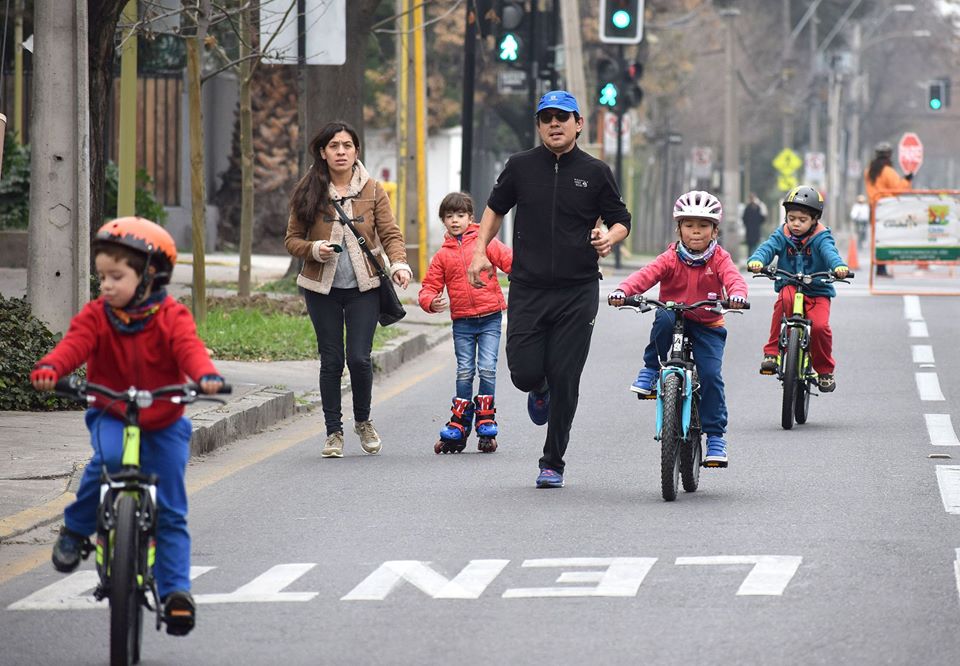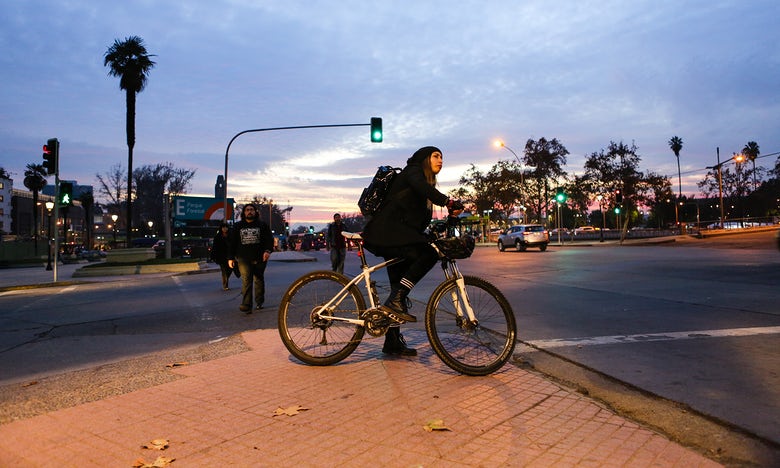
- Better Society -
- 3mins -
- 259 views
How car-free Sundays could be challenging Santiago’s social barriers
On Sunday mornings all cars are banned from 40 km of the Chilean capital’s roads, putting cyclists and pedestrians first for a change.
Santiago lagged behind other cities in the region for cycling and walking
Santiago, the Chilean capital with an urban population of five million, and a metro area population of over seven million, is a beautiful old-world city enjoying a modern day renaissance. Last year, Santiago completed major improvements in pedestrian space, cycling, and public transit.
Parque Metropolitano is twice the size of Central Park and great for cycling
Santiago’s Calle Aillavilú, in the central market of the city, has been transformed from a derelict, car-congested and unregulated parking lot to a pedestrian-friendly oasis. The street was repaved, the lighting improved, new trees were planted, and most importantly, cars were removed. What’s more, now around 40 km of the city’s roads become car-free every Sunday for all to enjoy.
The other big attraction for Santiago’s weekend cyclists is the Parque Metropolitano – the city’s answer to Central Park. Twice the size of its New York counterpart, the Parque is a gigantic green finger of mountain that reaches down into the city from the Andes. Head there on a weekend and it is packed with lycra-clad cyclists, winding up and down its paved roads or charging through woodlands on mountain bikes.

Policy redistributes road-spaces to create more room for cyclists.
The changes made on the streets of Santiago will go a long way toward improving social mobility in this city with significant class divides. On Sunday mornings, cars are banned from 40 kilometres of Santiago’s roads.
Around 30,000 people take to those vehicle-free streets on bikes, skateboards, roller-blades, or simply on foot.
The City has backed up these achievements with new sustainable transport policy changes and education programs. In April 2015, the National Ministry of Housing and Urbanism created a detailed standard of design for high quality cycle lanes, even piloting it in a major street near the presidential palace. The policy redistributes road-spaces to create more space for cyclists.
This standard was quickly adopted by Santiago, and the city has managed to increase cycling trips from a negligible 150 per day to over 5000 per day. This number is expected to increase with the growing popularity of BikeSantiago, the city’s bike share program, which is responsible for 50 percent of the increase.
Santiago also gave support to BMov Trici, a free bicycle taxi in the historic city centre operated by a private company, supported by advertising, that encourages cycle use and provides a non-motorised alternative to taxis.
Source: itdp.org


